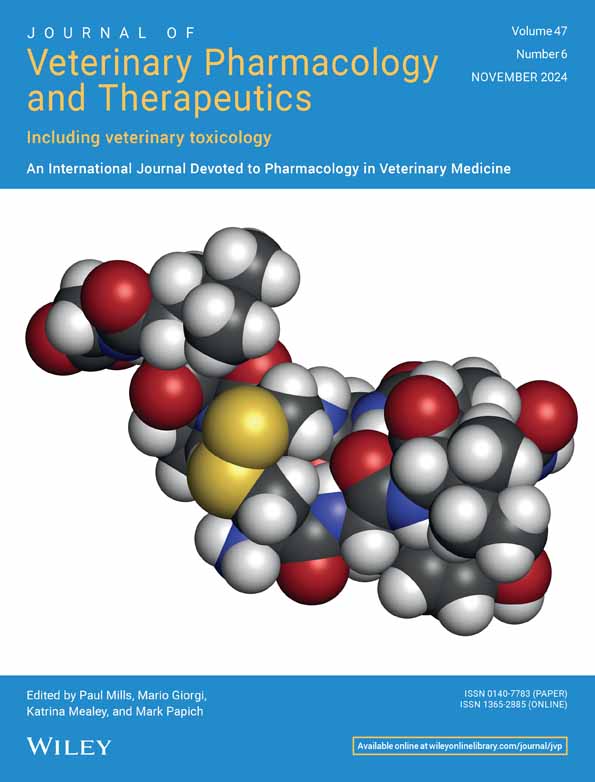The pharmacokinetics/pharmacodynamics integration of tilmicosin against Mycoplasma synoviae in vitro and in vivo
Xiu Yan and Jinxin Liu contributed equally.
Abstract
Mycoplasma synoviae (MS) infection is a serious threat to poultry industry in China. Tilmicosin is a semisynthetic macrolide antibiotic used only in animals and has shown potential efficacy against MS, but there were no reported articles concerning the pharmacokinetics/pharmacodynamics (PK/PD) interactions of tilmicosin against MS in vitro and vivo. This study aimed to assess the antibacterial activity of tilmicosin against MS in vitro and in vivo using PK/PD model to provide maximal efficacy. The minimum inhibitory concentration (MIC) and killing rates of different drug concentrations were measured using the microdilution method in vitro. Then, tilmicosin was administered orally to the MS-infected chickens at doses of 7.5 and 60 mg/kg, and the PK parameters of tilmicosin in joint dialysates were determined using high-pressure liquid chromatography/tandem mass spectrometry (HPLC-MS/MS) combined with the microdialysis technique. The antibacterial effect (△E) was calculated when the infected chickens were administered a single oral dose of tilmicosin at 4, 7.5, 15, 30, and 60 mg/kg b.w. The PK and PD data were fitted using the Sigmoid Emax model to evaluate the PK/PD interactions of tilmicosin against MS. The bactericidal activity of tilmicosin against MS was concentration dependent. Furthermore, the PK/PD index of AUC0–72h/MIC exhibited the most optimal fitting results (R2 = .98). The MS load decreased by 1, 2, and 3 Log10 CFU/mL, then AUC/MIC was determined as 13.99, 20.53, and 28.23 h, respectively, and the bactericidal effect can be achieved when the dose of MS-infected chickens is at 31.64 mg/kg b.w. The findings of this study hold significant implications for optimizing the treatment regimen for MS infection.
CONFLICT OF INTEREST STATEMENT
The authors declare that the research was conducted in the absence of any commercial or financial relationships that could be construed as a potential conflict of interest.
Open Research
Data Availability Statement
The data that support the findings of this study are available from the corresponding author upon reasonable request.




